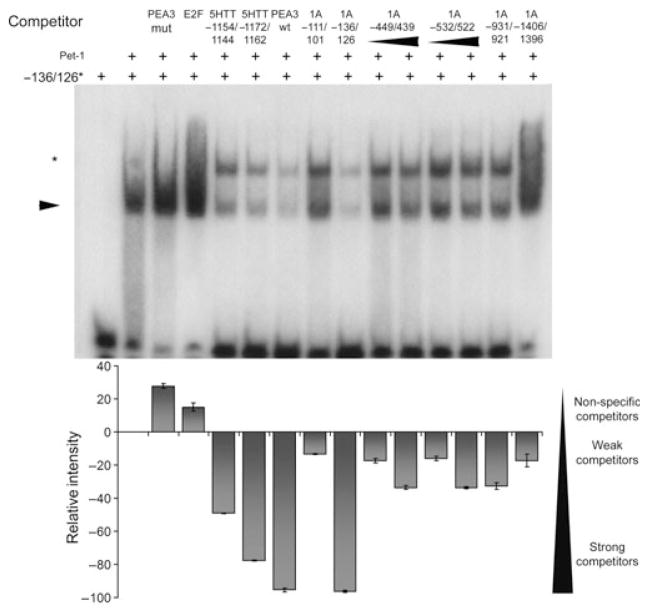Fig. 1.
Human Pet-1 directly binds multiple Pet-1 elements in the human 5-HT1A promoter. Electrophoretic mobility shift assay (EMSA) experiment showing Pet-1 binding to the previously identified Pet-1 element in the 5-HT1A promoter (−136/126, arrow) and subsequent competition by known specific probes (5-HTT −1154/1144, 5-HTT −1172/1162, PEA3 wt, 1A −136/126) but not of known non-specific probes (PEA3 mut, E2F). Putative 5-HT1A Pet-1 elements (1A −111/101, −450/440, −532/522, −931/921 and −1406/1396) were also able to compete for Pet-1 binding, although to a smaller extent than the 5-HT1A −136/126 itself. In all cases, 200× molar excess competitor was used, and where a concentration range was tested, the lower concentration of competitor was 100× molar excess. Intensity of the specific Pet-1 band (arrow) is quantified below each lane and expressed as intensity relative to the baseline Pet-1 interaction with the radiolabelled 1A −136/126 element. (*) A low mobility complex was observed in the presence of excess specific competitors. Error bars represent SEM for band intensity quantified for four independent experiments.

